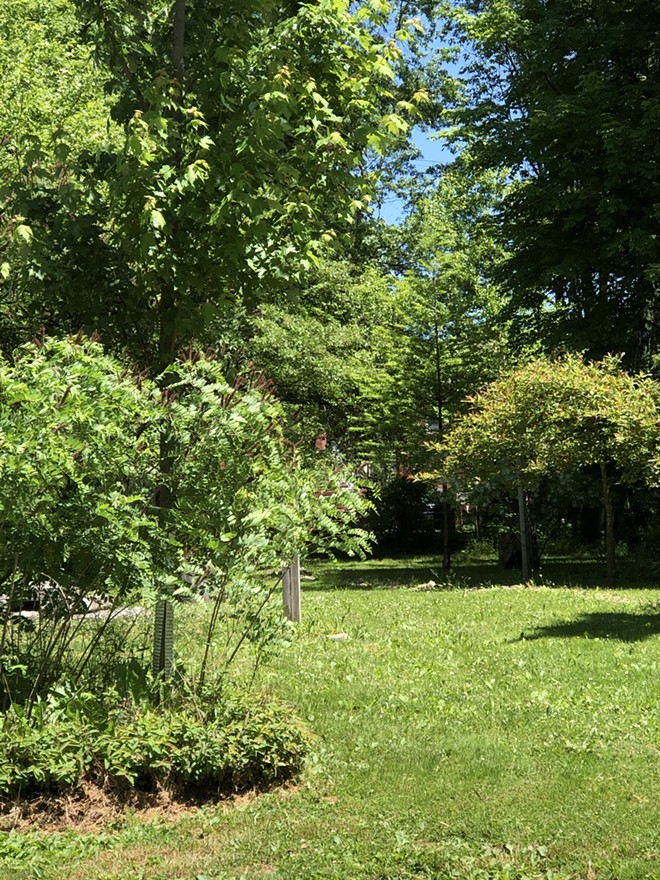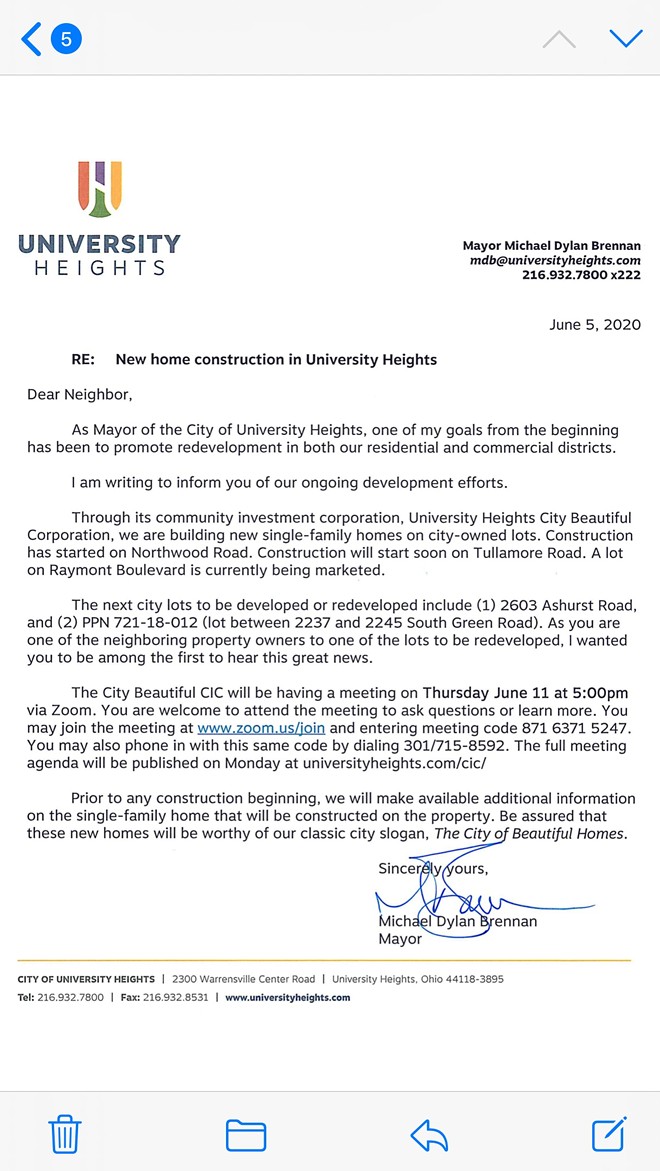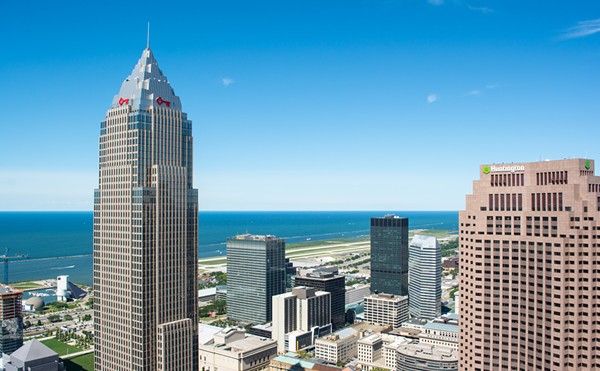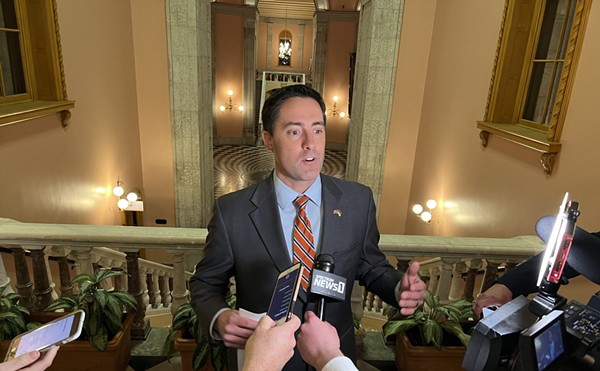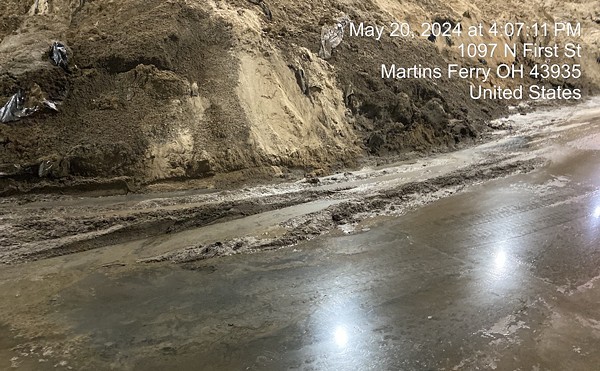A Community Rain Garden or Another Single-Family Home? University Heights Seems to Have Already Decided the Fate of One Lot
By Hannah Lebovits on Thu, Jun 11, 2020 at 3:04 pm
[
{
"name": "Ad - NativeInline - Injected",
"component": "38482495",
"insertPoint": "3",
"requiredCountToDisplay": "5"
},{
"name": "Real 1 Player (r2) - Inline",
"component": "38482494",
"insertPoint": "2/3",
"requiredCountToDisplay": "9"
}
]
Robin Gilbert is furious with the University Heights city administration.
Having lived on Ashurst Road for more than forty years, she’s had a long history with the street and especially the rain garden that was built ten years ago. Though doesn't often get involved in local politics, the city’s decision to enter into an agreement with a developer has her up in arms.
“A neighbor saw someone measuring and was in shock to find out what was going on. We were not notified. The city might think we were notified because they posted something but to most of us, a city announcement isn't something we’re paying attention to, especially with COVID going on. This whole thing seems like it was done very quickly.”
On May 18th, city council members unanimously agreed to transfer the lot to the city’s community improvement corporation (CIC), a private group that operates outside of governmental protocols, which intends to enter into an agreement with Northeast Ohio’s Knez Homes for redevelopment.
Titled “The City Beautiful Corporation” (barf), the CIC is made up of seven members — six government employees and one resident. In line with the Ohio Revised Code, CICs are nonprofit organizations tasked with “advancing, encouraging, and promoting the industrial, economic, commercial, and civic development of a community or area.” Though the University Heights CIC was initially supposed to include three residents, only one — a historically active resident who once served on council — is listed. This means that the group is almost entirely made up of public employees, including legislators and administrators, that do not have to follow public information and accountability processes when considering redevelopment and economic efforts.
Though Gilbert said neighbors had no idea what was going on, Councilmember Justin Gould told Scene that the council's consideration of the park redevelopment centered around concern for residents. According to Gould, city council decided that the residents would benefit more from another single-family detached home on the lot instead of the rain garden.
Ashurst-area residents could not disagree more.
The lot does more than absorb excess water. It also serves as a pocket park where residents often go to relax and enjoy the natural environment. Erin Gibbons, an adjunct professor who’s lived in the city since 2016, frequents the park with her young daughter. She values the park. "I’m proud of such a great, green area so close to us.”
In Mayor Michael Dylan Brennan’s view, however, if residents cared about the public space, they would have taken it upon themselves to volunteer to maintain it after the collaboration with the Northeast Ohio Regional Sewer District ended several years ago.
“I’m hearing from a lot of people who suddenly care about the park," he said. "Well I wish they had been more involved in taking care of the park up to this point. Nobody does anything over there. Suddenly they’re very interested now that we’re looking to redevelop it.”
Neighbors think that’s a mischaracterization. They’ve enjoyed spending time in the park but were unaware that the city expected them to take any action.
Though Gilbert and Giddens have not previously volunteered to maintain the park, now that they know it's in jeopardy, they’ve been trying to do just that. As has their neighbor Rebecca Bray, a full-time mother who previously worked in social science research.
“I’ve been reaching out to tell them how much we love the park,” Bray said, “but also there’s confusion about why they didn't ask for any input from residents.” Bray emailed Brennan and did not hear a response. She finally got through to one elected official, Councilmember Michelle Weiss, who encouraged her to attend the upcoming Zoom meeting today at 5:00 to voice her concerns.
Bray has several concerns. She and her young child have long visited the park and have been there every day, weather permitting, since the COVID-19 crisis began. As the space doesn't have any play equipment, Bray isnt concerned about anything virus-related. But she’s also concerned about the environmental impact. She’s watched the lot serve as a porous surface for stormwater run-off while enjoying the puddles with her son.
Gould doesn't believe that an environmental expert should have been consulted before the city entered into an agreement with the developers. The council member noted that the city asked Knez about maintaining the run-off function of the site and felt comfortable with the business’s response that they’ve done this sort of work before. Quick to point out that the process will require rounds of review, Gould said council preferred to speak with a developer to determine whether a business was interested in the property before speaking to any environmental experts.
“The review process will start after they tell us what’s being built there,” Gould noted, “before you have [a buyer] in place, it's impossible to understand the effects of that building on any given lot.”
For Brennan, this isn't just about one lot- it’s a broader strategy for the city.
“The city is in a mode of building on undeveloped lots and vacant lots,” Brennan said. “And here we have a lot that has been underutilized for, by our count, at least five years since the Sewer District’s partnership with the city ended. That lot hasn't been doing much of anything.”
The lot’s function as a rain garden and pocket park doesn't, according to Brennan, count as adequate utilization. He sees a single-family detached home as the best use of the space. Though there is a plan to build apartments in the University Square area, Brennan feels there is a need to continue to build additional housing in the city. “It’s about numbers here,” Brennan tells me, citing active and sold listings in the city. “Our housing market is at an all time high for the first time since the housing crash in 2008.”
There used to be a home there, as Gould and Brennan both pointed out, but Gilbert, whose history with the city goes back farther than both of theirs, recalls that residents worked together to get the old, vacant home torn down. She contends that residents see the current use of the space as best for the neighborhood.
“[The CIC]’s purpose is clearly to buy up land and generate money. But this isn't a space that needs to be demolished,” Gilbert argued. “This is clearly a park that we fought for, that our street loves, that has added to the enjoyment and pleasure and natural resources of the neighborhood.”
University Heights residents, and anyone else with a vested interest in preserving the green space, are encouraged to join the Zoom meeting at 5:00 this evening.
Though Brennan stated that nothing has been finalized, Gilbert, Gibbons and Bray all felt that the statement from the city- one they only saw from others- made it sound as if it was a done deal. Though Bray was encouraged by Councilperson Michelle Weiss to attend the Zoom meeting this evening, she noted that, “The letter they sent out did not sound at all like the city was requesting feedback from residents.”
Tags:
SCENE Supporters make it possible to tell the Cleveland stories you won’t find elsewhere.
Become a supporter today.
Scroll to read more Cleveland News articles
Newsletters
Join Cleveland Scene Newsletters
Subscribe now to get the latest news delivered right to your inbox.

